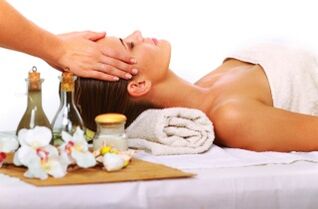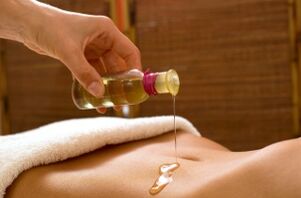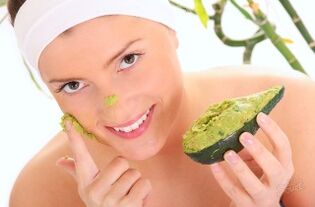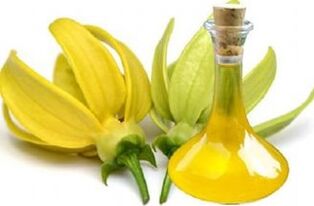
For the first time, skin rejuvenation oil was used several centuries BC. Ancient Roman emperors, ancient Greek priestesses, and ancient Egyptian pharaohs anointed the skin with oils. Back then, they were almost the only cosmetic products, were literally worth their weight in gold, and were only available to the nobility.
With the development of the chemical industry, more effective synthetic creams appeared, and for some time oils were rightly forgotten.
But today, when, after careful study, scientists discovered new anti-aging properties of vegetable oils, they are experiencing a rebirth.
Nowadays, all over the world, the use of natural cosmetics based on natural oils and plant extracts is experiencing a real boom.
Why oils are useful
All vegetable oils can be divided into two large groups - natural and essential. They can be used both individually and in combination, purchasing ready-made compositions or composing them yourself. These products are obtained by cold pressing from quality natural raw materials. They can come from nuts, seeds, grains and fruit kernels. These oils are above all a valuable nutritional source, because most of them contain:

- the most powerful natural antioxidants - vitamins C and E;
- vitamin A which increases the elasticity of the skin;
- B vitamins which improve the condition of the skin, hair, nails;
- precious trace elements - selenium, iodine, manganese, iron, copper, etc. ;
- vital minerals - potassium, calcium, magnesium, fluoride, etc.
The secret to such a powerful effect of natural oils on human skin is that they have a similar chemical composition in their formula to sebum. Allergies are extremely rare there, they do not cause irritation and have a pronounced softening and soothing effect.
Most often, natural vegetable oils are the basic components of creams and masks, in which essential oils with truly unique properties easily dissolve.
Interestingly, in many ways essential oils still remain a mystery to humans. By their origin, they are volatile aromatic substances that can be found in different parts of plants. To get a small amount of pure essential oil, sometimes you have to process tons of raw materials, so the cost can be very high.
The most remarkable property of essential oils is their ability to penetrate the deeper layers of the skin due to their low molecular weight structure. In addition, absolutely all of them have pronounced antiseptic and bactericidal properties and are able in one way or another to influence the mental state of a person.
Now their medicinal properties are being studied. But even what we already know about them allows them to be used effectively both at home and in professional cosmetology.
Natural oils

Natural vegetable oils are used not only for the face, but also for the whole body. Massaging with them quickly and effectively improves the condition of the skin, moisturizes and even smoothes fine lines.
But not all of them are constantly in a liquid state. Some of them (cocoa, shea, coconut, etc. ) harden at room temperature and look like oily paraffin in structure. Before use, they must be warmed in a water bath until the solids dissolve. Due to this property, these oils often become the basic building blocks for making homemade creams.
Different types of oils have different properties, so they should be selected individually, depending on the condition of the skin and the problem to be solved by using them.
The best product for you is one that is completely absorbed into the skin and does not leave a greasy film on it. The most pronounced anti-aging properties of these oils:
- Arganovoye. Perfectly hydrates the skin and, thanks to its chemical composition, restores its Ph and water-salt balance. It is able to smooth out wrinkles and even shallow scars.
- Shea Butter. It actively stimulates tissue regeneration, has powerful anti-inflammatory properties, improves skin elasticity and gives it a healthy glow.
- Attorney. Saturates the epidermis with valuable nutrients, penetrating into its deep layers. Creates a protective barrier that retains moisture, absorbs quickly, gradually removes pigmentation.

- Cocoa. Contains unsaturated fatty acids, which quickly restore the protective properties of the skin, and is also a natural sun filter.
- Grape seed. It actively neutralizes free radicals, slows down the aging process, smoothes fine lines and improves skin tone. Removes bruises and bags under the eyes well.
- Almond. It successfully fights cellulite, quickly tightens the skin, hydrates it perfectly, makes it softer and more elastic.
- Sea buckthorn. Has the strongest healing and anti-inflammatory properties, is a powerful natural antioxidant, successfully fights wrinkles.
You should be aware that when working with natural oils, you should avoid their contact with metallic objects. They can be stored for up to six months, in a tightly closed glass container, protected from exposure to ultraviolet rays, preferably in a dark and cool place.
Homemade creams prepared on a natural basis can be stored in the refrigerator for up to one month.
Essential oils
Essential oils have pronounced healing properties and their variety is very large. Today, more than 3000 essential oil plants are known. However, there are just over 200 that undergo industrial transformation. In cosmetology, only about fifty types of essential oils are used.
Most often, the following types of essential oils are used for facial rejuvenation:

- anise - refreshes the skin, increases its elasticity;
- orange - accelerates cell regeneration, well resists cellulite;
- basil - perfectly removes puffiness and bags under the eyes;
- valerian - soothes, relieves irritation, smoothes wrinkles;
- coniferous - improves skin tone, activates blood circulation, strengthens capillaries;
- ylang-ylang - one of the most powerful stimulants of the skin tone, gives a lifting effect;
- cilantro - quickly tightens the skin, makes it smooth and elastic;
- lavender - gently and effectively affects sensitive skin;
- lemon - whitens and rejuvenates, stimulates cell regeneration;
- juniper - with regular use significantly reduces stretch marks;
- Peppermint - an excellent natural stimulant of intracellular processes;
- neroli - increases firmness and elasticity, eliminates vascular networks, unifies color;
- patchouli - refreshes, hydrates, eliminates flaccidity and earthy color;
- rosemary - makes the skin fresh and elastic, quickly rejuvenates;
- rose is the most popular and versatile anti-aging agent;
- sage - significantly improves the structure and appearance of the skin, visibly narrowing the pores;
- tea tree - a powerful antioxidant and antiseptic, restores the skin after acne and dermatitis.
Do not mix more than 2-3 types of essential oils at the same time, as this can lead to a weakening of their healing properties. It is strongly recommended not to apply 100% essential oils to the skin in their pure form - this can lead to irritation, an allergic reaction and even a burn. Localized applications of these are sometimes used to treat acne.
Reviews and contraindications

Reviews and results after using natural oils are the most positive.
In terms of the effect, they are often not inferior to the more expensive creams and have practically no contraindications. The only limitation is not to apply them to areas affected by skin diseases and pustular rashes.
Individual intolerance is extremely rare.
Almost all essential oils should not be used during pregnancy, breastfeeding, and fever. In addition, for each of them there are additional restrictions and contraindications that should be carefully considered before use.
Unlike natural oils, if misused they can cause high blood pressure, irritation, and even bronchial spasms. Due to their powerful effects on the body, you should treat them with caution.





















